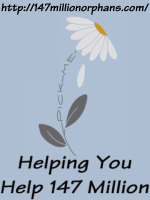
Ethiopia said Thursday it needs emergency food aid for 6.2 million people, an appeal that comes 25 years after a devastating famine compounded by communist policies killed 1 million and prompted one of the largest charity campaigns in history.
The crisis stems from a prolonged drought that has hit much of the Horn of Africa, including Kenya and Somalia.
Drought is especially disastrous in Ethiopia because more than 80 percent of people live off the land. Agriculture drives the economy, accounting for half of all domestic production and most exports.
Mitiku Kassa, Ethiopia's state minister for agriculture and rural development, appealed to donors Thursday for more than $121 million. In January, he had said that 4.9 million of Ethiopia's 85 million people needed emergency food aid.
Ethiopia has long struggled with cyclical droughts, which are compounded by the country's dependence on rain-fed agriculture and archaic farming practices.
In 1984, Ethiopia's famine drew international attention as news reports showed emaciated children and adults with limbs as thin as sticks. The crisis launched one of the biggest global charity campaigns in history, including the concert Live Aid.
This year's drought appears to be slightly less severe than the one last year, which was exacerbated by high food prices. A year ago, Mitiku appealed for aid to feed 6.4 million people affected by drought. Many humanitarian groups have said in recent years that they believe the number of people affected by hunger is higher than government estimates.
Because of Ethiopia's large size and poor infrastructure, independent observers have difficulty collecting data. The worst-affected areas in the country's east are the site of a fierce insurgency and are off-limits to journalists. Aid groups say their movements in these areas are limited by military restrictions.
Nick Martlew, an official with the aid group Oxfam in Ethiopia, said the country's east should be green and healthy now, but that crops are wilting in the sun and won't produce a sufficient amount of food.
"Really until June next year there is going to be insufficient food around," he said. "Where we are in eastern Ethiopia you can look out and it's completely barren as far as the eye can see."
Drought and water shortages are also increasing in Ethiopia's south because of a changing climate, Martlew said. Oxfam is helping villages collect rain water for long-term use.
In a report marking 25 years since Ethiopia's famine, Oxfam said countries must focus on preparing communities to prevent and deal with drought and other disasters before they strike, rather than relying on importing aid.
According to the U.N., nearly two-thirds of Africa's agricultural land has been degraded by erosion and misused pesticides. In Ethiopia, where bad farming practices have led to massive erosion, 85 percent of land is damaged.
"The current humanitarian situation underlines our belief that while food aid — much of it donated by foreign donors — is important and can save lives, we need greater funding for longer-term solutions, which can begin to tackle the underlying causes that make people so vulnerable to disasters," said Oxfam's Ethiopia country director, Waleed Rauf.
In eastern Ethiopia's Hararge zone, the scene of some of the worst hunger and drought-related suffering last year, health official Aliye Youya said few infants had come in to the main feeding center for treatment. A new initiative by the Ethiopian government to put health workers in every neighborhood has helped, he said.
But he said he was still concerned about the lack of rain in some areas.
"(A month ago) there was no rain, especially in the lowland areas," he said. "But nowadays there is some rain. The drought is affecting the lowland areas."
The crisis stems from a prolonged drought that has hit much of the Horn of Africa, including Kenya and Somalia.
Drought is especially disastrous in Ethiopia because more than 80 percent of people live off the land. Agriculture drives the economy, accounting for half of all domestic production and most exports.
Mitiku Kassa, Ethiopia's state minister for agriculture and rural development, appealed to donors Thursday for more than $121 million. In January, he had said that 4.9 million of Ethiopia's 85 million people needed emergency food aid.
Ethiopia has long struggled with cyclical droughts, which are compounded by the country's dependence on rain-fed agriculture and archaic farming practices.
In 1984, Ethiopia's famine drew international attention as news reports showed emaciated children and adults with limbs as thin as sticks. The crisis launched one of the biggest global charity campaigns in history, including the concert Live Aid.
This year's drought appears to be slightly less severe than the one last year, which was exacerbated by high food prices. A year ago, Mitiku appealed for aid to feed 6.4 million people affected by drought. Many humanitarian groups have said in recent years that they believe the number of people affected by hunger is higher than government estimates.
Because of Ethiopia's large size and poor infrastructure, independent observers have difficulty collecting data. The worst-affected areas in the country's east are the site of a fierce insurgency and are off-limits to journalists. Aid groups say their movements in these areas are limited by military restrictions.
Nick Martlew, an official with the aid group Oxfam in Ethiopia, said the country's east should be green and healthy now, but that crops are wilting in the sun and won't produce a sufficient amount of food.
"Really until June next year there is going to be insufficient food around," he said. "Where we are in eastern Ethiopia you can look out and it's completely barren as far as the eye can see."
Drought and water shortages are also increasing in Ethiopia's south because of a changing climate, Martlew said. Oxfam is helping villages collect rain water for long-term use.
In a report marking 25 years since Ethiopia's famine, Oxfam said countries must focus on preparing communities to prevent and deal with drought and other disasters before they strike, rather than relying on importing aid.
According to the U.N., nearly two-thirds of Africa's agricultural land has been degraded by erosion and misused pesticides. In Ethiopia, where bad farming practices have led to massive erosion, 85 percent of land is damaged.
"The current humanitarian situation underlines our belief that while food aid — much of it donated by foreign donors — is important and can save lives, we need greater funding for longer-term solutions, which can begin to tackle the underlying causes that make people so vulnerable to disasters," said Oxfam's Ethiopia country director, Waleed Rauf.
In eastern Ethiopia's Hararge zone, the scene of some of the worst hunger and drought-related suffering last year, health official Aliye Youya said few infants had come in to the main feeding center for treatment. A new initiative by the Ethiopian government to put health workers in every neighborhood has helped, he said.
But he said he was still concerned about the lack of rain in some areas.
"(A month ago) there was no rain, especially in the lowland areas," he said. "But nowadays there is some rain. The drought is affecting the lowland areas."













No comments:
Post a Comment